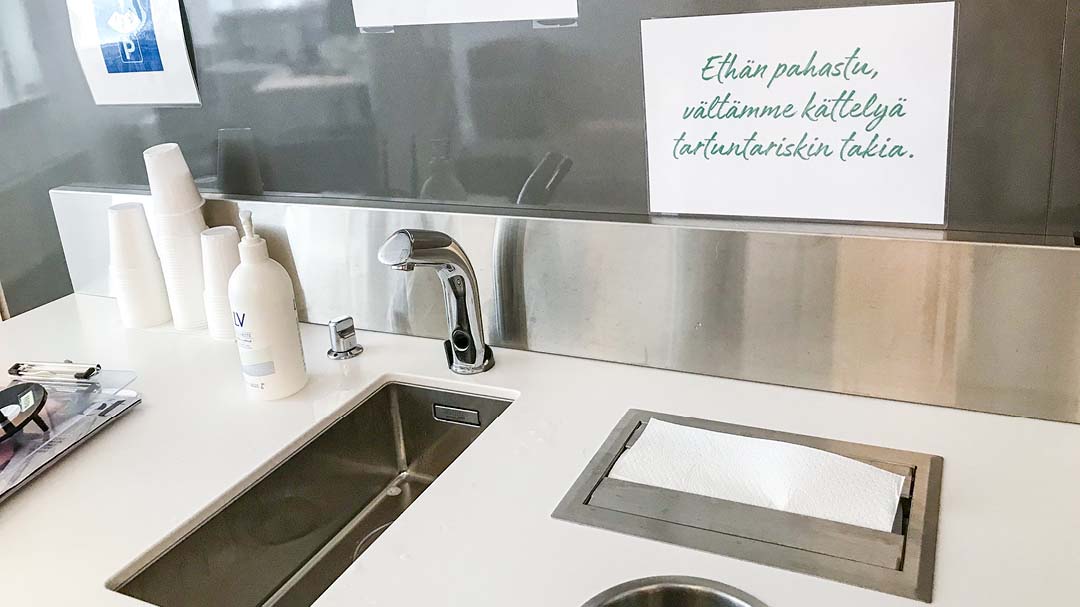STM ja THL tiedottavat
Clear reduction in number of COVID-19 cases — positive trend must continue before restrictions can be eased

The number of new COVID-19 cases reported in Finland has decreased noticeably over the past few weeks. The number started to fall before Easter. The current restrictions and recommendations and the closure of businesses serving food and beverages have clearly been effective and prevented infections. Vaccinations have also reduced infections, particularly among older people. It is imperative that this positive trend continues so that the restrictions can be gradually eased and dismantled later in the spring.
There are major regional differences in the development of the epidemic. Southern Finland is still the worst affected area.
- The COVID-19 epidemic: regional situation, recommendations and restrictions (Finnish Institute for Health and Welfare)
- Coronavirus in numbers (Hospital District of Helsinki and Uusimaa)
Clear downward trend in number and incidence of cases
Between 5 and 11 April, slightly over 2,500 new cases were reported to the communicable diseases register, showing a decrease of nearly 750 cases from the previous week. The incidence of new cases was 45 per 100,000 inhabitants, while in the previous week it was 59.
The total number of new cases in the last two-week period was more than 5,700, which was about 1,600 cases fewer than in the preceding two-week period. The incidence of new cases was 104 per 100,000 inhabitants, while in the preceding two-week period it was 160.
Currently, the estimated basic reproduction number is 0.75–0.95, with a 90 per cent probability. This is at the same level as the week before.
A total of 118,000 COVID-19 tests were taken between 5 and 11 April, which is slightly less than in the previous week and noticeably less than in March. The percentage of positive COVID-19 cases of all samples taken in Finland continued to decrease, as in the previous week, now standing at 2.1 per cent. The figure still stood at 3.3 per cent between 8 and 14 March, for example.
In Finland as a whole, the source of infection was traced in 73 per cent of all new cases of domestic origin. The success rate for contact tracing was thus slightly higher than the week before. Between 5 and 11 April, the percentage of cases where the virus was contracted abroad was slightly higher than before. These cases accounted for 4.4 per cent of all new cases. The further infections resulting from them accounted for 1.4 per cent of all cases.
Need for hospital care is expected to decrease further
The number of people requiring intensive care due to COVID-19 has decreased noticeably in the past three weeks. Patient numbers in other hospital care have also dropped: on 14 April, there were 34 patients in intensive care, 42 inpatients in primary healthcare and 104 inpatients in specialised healthcare. The total number of COVID-19 inpatients was 180, compared to 250 the previous week. The need for hospital is expected to decrease further in the coming weeks.
On 14 April 2021, the total number of deaths related to the disease was 881.
Highest incidence among children and young people — virus contracted at home, not at school
Between 5 and 11 April, the incidence rate was highest among 10–19-year-olds. Most of the infections in this age group have been traced back to home or other social contacts. The incidence rate was also high among 20–29-year-olds and 30–39-year-olds.
The incidence has, however, remained low among people over 70 years of age since the beginning of this year. This age group is most at risk of contracting a severe case of COVID-19. The vaccination of older people against COVID-19 has proved to be effective as we have seen a clear reduction in the number of cases among the oldest age groups.
The monitoring report on the epidemic published today and the previous reports are available on the website of the Finnish Institute for Health and Welfare.
- Monitoring coronavirus (Finnish Institute for Health and Welfare), in Finnish and Swedish
- Action plan for implementing the hybrid strategy to curb the COVID-19 epidemic in January-May 2021 (Publications of the Ministry of Social Affairs and Health 2021:1)
- Effects of the COVID-19 epidemic on wellbeing, services and the economy (Finnish Institute for Health and Welfare), in Finnish
- Progress with the rollout of COVID-19 vaccinations (Finnish Institute for Health and Welfare), in Finnish and Swedish
Inquiries:
Mika Salminen, Director, Finnish Institute for Health and Welfare, [email protected] (development of the epidemic)
Taneli Puumalainen, Chief Physician, Finnish Institute for Health and Welfare, [email protected] (development of the epidemic)
Simopekka Vänskä, Senior Researcher, Finnish Institute for Health and Welfare, [email protected] (projection models)
Pasi Pohjola, Director, Ministry of Social Affairs and Health, [email protected] (situational picture and modelling group)